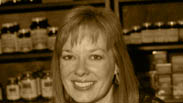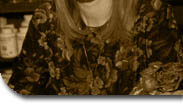(22)
was to evaluate the
stability of SC-19192 (DKP) when mixed
with
Rockland mouse/rat
diet and held at room temperature (73
degrees
F.). Two concentrations
of diet mixture were tested: 3.0%
and 6.0% DKP. A preliminary
analysis was performed on
1-31-72 to test the
analytical method (T.L.C.), and recovery
of DKP. Assays were
performed at one-week intervals on
2-16-72, 2-23-72,
3-1-72, 3-8-72, 3-15-72, 3-23-72, and
3-29-72.
Copies of all analytical
reports were obtained and are attached
to this report, along
with a copy of the protocol. (see exhibits
#24-27).
The titration method
of DKP analysis was used initially, along
with the TLC method.
The titration method was discontinued
after the 1-week
analysis on 2.-23-72. Thin layer chromoto-
graphy was used thereafter.
It should be noted that the titra-
tion method was the
only reliable quantification method for
DKP analysis.
Page #54 of the laboratory
notebook #51 (See Exhibit #26) indicated
(from the photograph)
that there was something in the basal
diet
itself producing
a spot on the TLC plate which had an Rf.
value corresponding
to DKP. This would make quantification
of DKP by this method
difficult.
Some of the photographs
of the TLC plates approached to labor-
atory notebook #51
showed no DKP reference standards. The
analysis described
on pages #69-72 did use a DKP standard
but those on pages
#88-89, #106-107, #144-145, and #284-
285 showed no reference
standard. (See Exhibit #26)
Only one solvent
system was used for development of TLC
plates
throughout the study,
even though it was apparent that some
material in the basal
diet was producing a spot on the TLC
plate with an Rf.
value corresponding to DKP. with the
above method of analysis,
only materials reacting with the
potassium iodine
starch reagent would be detected. Another
solvent system was
available for TLC analysis of DKP (See
Exhibit #19) but
apparently was not used in the stability
study.
It should also be
noted that some of the chromatograms showed
poor separation (day
28 on pages #144-145, and day 35 on pages
#156-157 of notebook
#51). See Exhibit #26)
In general, the data
described in the reports of analysis
corresponded well
with the laboratory notebooks, although
the
poor chromatograms
were not mentioned in the reports of
analysis.
(23)
The level of impurities
as indicated by TLC was low; the
major impurity, an
unknown substance, represented about 2%
of
the DKP. The remaining
impurities were also low, as apparent
from the density
of the TLC spots compared with the DKP
spots,
but were not quantified.
A glossary of terms
for aspartame and its diketopiperazine
is
attached as exhibit
#9 and copies of specifications for DKP
are attached as exhibits
#16-18.
No homogeneity tests
were performed on any batches of diet
mix
used in E-77-78,
and evidence exists tat homogeneity was
a
problem with the
DKP diet mixtures. Two of the stability
study assay reports,
analytical numbers A7728 and A7739 both
dated 2-16-72, contained
the statement: "These samples were
not homogeneous.
They had to be reground before they could
be
sampled". The
assay reports were signed by Barbara Bickford,
a Searle analyst.
We examined the laboratory
notebook #51 assigned to Barbara
Bickford and noted
that a B & W polaroid photograph of
the non-
homogeneous sample
in question was attached to page #58 of
the
notebook. The photograph
clearly shows discrete lighter colored
particles of diverse
size and shape distributed nonuniformly
throughout the mixture.
These lighter colored particles appear
to be distinct from
the fairly find granular nature of the
chow itself.
A copy of this photograph
was made and is attached to the report
as exhibit #29. When
questioned about the size of the white
square sheet of paper
in the photograph (on which the diet
mixture was placed)
Ms. Bickford and C. Seul both stated that
it was 6"by6",
when we interviewed them on 6-2-77. When
the
photograph was enlarged
until the sample paper was 6"by6"
(actual
size) we measured
the large particles (which were identified
as
DKP by Ms. Bickford)
and found them to be 4 to 6mm in size.
When we interviewed
Ms. Bickford on 6-1 and 6-2-77, she stated
that she had nothing
to do with the preparation of the diet
mixtures. She said
that the samples had probably been received
from the toxicology
lab and stored at room temperature. Her
procedure was to
weigh out a predetermined amount of the
sample,
and if not a uniform
powder she would re-grind it with a mortar
and pestle, and would
make a note of this in her lab notebook.
We asked Ms. Bickford
if she ever reported this lack of homo-
geneity to Dr.Rao,
and she replied that she did not.
(24)
We could not determine
whether the samples assayed in the
stability study were
from diet mixtures actually fed to
the animals, in spite
of the fact that we were told so by some
employees.
On 6-2-77, we interviewed
Analyst Barbara Bickford and Clifford
Seul, who was Mrs.
Bickford's supervisor at the time that
the
stability samples
were analyzed (Feb. 16, 1972). Clifford
Seul told us that
the samples analyzed on 2-16-72 and described
on page #58 of laboratory
notebook #51, were obtained from the
admixture being fed
the rats on study, and not a special mix-
ture prepared for
the stability study.
On 6-1-77 we interviewed
Bart Tangonan, whose duties included
observing, weighing,
and feeding the animals, and mixing the
diet for study E-77/78.
Mr. Tangonan did not remember if there
were any written
instructions for mixing the diets but
thought
that it was mixed
for a specified length of time. He said
that
if the diet appeared
to need more mixing, it was mixed longer.
He could not remember
anything about the samples obtained for
the stability study.
On 6-3-77 we interviewed
Tony Martinez who was a supervisor in
the Toxicology Laboratory
in 1972. He told us that although
the analytical report
indicated that the sample was submitted
by Dr. Rao, actually
anyone in the toxicology laboratory could
have submitted the
sample. According to Mr. Martinez, the
normal procedure
in such cases was to collect a sample
just after mixing
compound and diet and then repeat this
in
four weeks. He could
not specifically recall what was done
with regard to the
stability study in question, and could
not
remember whether
the samples had been taken from the diets
being fed the animals
on study P.T. 98873 (E-77/78). He did
not remember any
problems with mixing, bud did say that
a longer
mixing time was required
at higher compound concentrations.
A point to be considered,
however, is that although the
analytical report
states that the material analyzed was
pre-
pared to contain
3.0 and 6.0% DKP, none of the diets reported
to be fed contained
these exact amounts of DKP according to
the records of food
concentration calculations, which were
used to prepare the
diets for study #E-77/78. (see chart
attached to Exhibit
#30.) In addition, the stability study
protocol (Exhibit
#24) specified that the test batches would
be 1 kg. in size.
If the protocol was followed, the small
(1 kg.) test batches
would not have been sufficient in size
to feed a single
dose group of the animals on study. (See
Protocol, Exhibit
#24)


